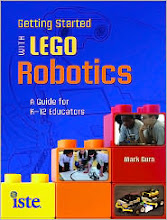"NAO Robot Has Learned To Write
Maybe you’ve dreamt of being that man or woman who is so important as to compose speeches and letters simply by barking out declamations whilst an attentive assistant jots down your brilliant every word. Robot developer Franck Calzada has brought us one step closer. He’s created an assistant scribe for the common man in his new program in which a NAO robot can write any word.
At the moment, however, you’re going to need a lot of time – and patience – if you enlist NAO’s services. To say it’s deliberate in its writing is quite the understatement.
Calzada has himself spent a lot of time with NAO, teaching it to play games like catch, Hangman and the Statue Game. Now, with his ability to write any word it hears, NAO can actually get some work done. This isn’t the first time we’ve seen Nao write. And while it will definitely be some time before it begins replacing office workers, its penmanship has certainly improved..."
Read the full story at its source: http://singularityhub.com/2013/05/10/nao-robot-has-learned-to-write/
BTW... What's a NAO Robot? http://www.robotshop.com/aldebaran-robotics-nao-h25-humanoid-robot-academic-6.html
Student Focus Question(s): Why is this story newsworthy? What do you feel needs to be improved about this robot? Why? If the programers and engineers were able to make the improvements that you'd like to see in this robot, would you use it as a personal secretary? Do you think that some day there will be good robot writing secretaries? Do you think teachers will let students use these robots to take their notes?
After thinking about this, you can enter your response using the "Comments" function, below (to the left of the envelope icon). Feel free to identify your school and/or class....
.....................................................................................................
Click on book cover for information on Getting Started with LEGO Robotics.

Anyone who works with kids can do LEGO Robotics, a rich and highly motivating platform for important STEM Learning! (surprisingly affordable, too) This books explains it all!
Check out ROBOTICS for TEACHERS Podcast
www.roboticsforteachers.com


